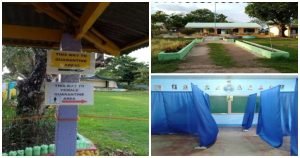The trash problem in the oceans is a huge issue that continues to hound the planet for decades.
What’s sad is that recent research projects that by year 2050, the oceans will be so polluted that there will likely be more plastics and other trash than fish. This is the reason why it is important to find ways to solve the garbage issue, before we all run out of fish to eat!
Jeanny Yao and Miranda Wang are two young students who just might have found a good solution to the problem when the created bacteria that eat plastics in the ocean, turning the material into water! Now, that really sounds fantastic, right?
These 20-year-old students are making waves in the scientific community with this impressive invention that won them $400k in financing to start developing the product on a larger scale.
The youngest to win the Perlman science prize, Yao and Wang created bacteria that was able to successfully convert plastics into carbon dioxide and water. Winning at least 5 prizes for their invention, the two young scientists suggested that their bacteria can help in two ways: 1) clean beaches and 2) produce raw materials for clothing.

Photo credit: Physics Astronomy
They were able to come up with this project after realizing that the plastic problem is here to stay, mostly because of people’s dependence on the material. Thus, they tried to find a way to solve the problem without bringing further damage into the environment.
“It is practically impossible to make people stop using plastic; we need technology to break the material, and everything becomes biodegradable,” Wang explained.
How to Dissolve Plastics Using Bacteria?
Using the model created by Yao and Wang, plastics are first prepared by dissolving the materials and using enzymes to convert them into highly malleable fractions. Then, the dissolved plastics become food for the bacteria inside the biodigester station.
What’s even more impressive is that it only takes about 24 hours for the bacteria to fully convert the plastics placed inside the biodigester station into carbon dioxide and water! Sounds promising for our oceans, right?



